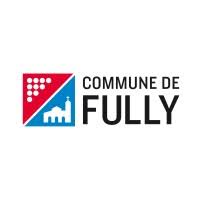Water hammer is a fairly common phenomenon in a water system that usually results in a thud and vibration and can occur when there is a sudden change in water velocity. This rapid change can be caused by the closing or opening of a valve or tap, or by a pump being switched on or off. In the long run, water hammer can lead to significant material damage, including pipe deformation or rupture, leakage or diaphragm rupture. This is why, if they cannot be avoided, water networks must incorporate technical artefacts to reduce their impact.

#4 STOP WATER HAMMERING
ISSUE
To prevent water hammer, various installations can be used: special valves, pressure regulators, spring-loaded water hammer arresters, air reserves, diaphragms, etc.
While some of these solutions can easily be integrated into domestic networks at low cost, the same cannot be said for public networks which operate with much higher pressures and flows. In Fully, for example, water hammer can occur when a pump in the drinking water network stops, as the network is currently equipped with 8 pumps with a pressure of 10 to 13 bars.
The management of water hammer on these networks is therefore essentially a problem of cost and optimisation. For the municipality, the problem is therefore above all to know where to position these installations on the drinking water network. The idea is always to limit the deleterious effects of accidental water hammer as much as possible, but also to do so in the most optimal way possible to reduce the overall cost of these structures.
The expected system should thus make it possible to position the various anti-hammer installations on the network at the most favourable location and the most exposed to the risks of water hammer, while taking into account the costs involved. It should also guide the municipality towards the most effective type and number of installations.
DESIRED AREAS OF INNOVATION
- Existing solutions: the proposal should integrate existing solutions and guide the water manager in his choices, depending on the specificities of the municipality’s network;
- Modelling: the solution should identify the most efficient installation types and locations to avoid water hammer;
- Multi-criteria optimisation: the proposed solution should integrate the variable of the cost of the works and their realisation in the proposal of the solution.
Olivier Studer
Head of IS Department Fully
Municipality of Fully
Rue de l’Eglise 46
1926 Fully
You have an idea, a solution or a technology to solve this challenge?
Fill in the application form!
THE CHALLENGE LEADER
The municipality of Fully has about 9,200 inhabitants for 3,779 ha. Agriculture is thus particularly present with 1’155 ha. The commune’s water networks are managed by the Services Industriels de Fully.
